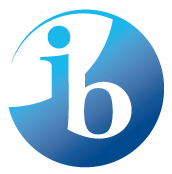Cheers to The Lesson Plan blog for bringing my attention to the following video by Simon Sinek
Partly because it’s what I was working on today, this video made me think about the IB Unit Planner. Our high school is constantly striving to be ever-more faithful in its implementation of the IB Middle Years Program (MYP). An important part of MYP is the use of Unit Planners in the process of developing an instructional unit.
I am spending at least part of this summer helping to design the professional development for teachers when they return to our IB school in August. As our training team wrote last year, and I reiterated in a previous post,
design the professional development for teachers when they return to our IB school in August. As our training team wrote last year, and I reiterated in a previous post,
Training of teachers should reflect the best practices and pedagogy we want them to use with their students.
After a couple of days of floundering, we finally realized it might be a good idea to follow our own advice. So, we started to go through the steps of the Unit Planner to help shape our approach.
Stage 2 of the planner includes deciding on elements that are in a more traditional lesson plan, such as content, learner experiences, teacher strategies, and resources.
Before that happens in detail, however, Stage 1 requires that you articulate the significant concept, the unit question, and the area of interaction focus.
If you’re still reading, you’ve probably forgotten about Simon Sinek’s TED talk at the beginning of this post; now that I’ve mentioned it, you might be wondering what one has to do with the other.
I think that traditional lesson plans (and Stage 2 of the MYP unit planner) address the “What?” and “How?”, but the “Why?” is never really answered satisfactorily. (To pass the test, or the always nebulous to make productive members of society, I imagine.) One of the key advantages of the MYP unit planner is that it forces you to start at the center of Sinek’s “golden circle”, asking “Why?” before asking the other questions.
This is a key problem facing education in the world nation of tested-to-death, dictated standards. Curriculum is presented to teachers from the outside of Sinek’s golden circle, as a list of the “whats”. Though still allowing some professional freedom with regard to the “hows”, even that limited freedom is being eroded. When teachers are told the “whats” and even “hows” of teaching, it is only natural that they will struggle with answering “Why?”
Can a state board member answer the question posed by an at-risk teenager wondering why they have to “justify and apply triangle congruence relationships”? If so, then the “why” answers should be included at the heart of any curriculum document. If not, then we will persistently struggle with maintaining relevance for any diverse population, until we give teachers the freedom to answer all three questions in Sinek’s golden circle, starting, as he suggests, from the inside.
This reminds me of a recent article in the Washington post, Is the U.S. doing teacher reform all wrong? by Dana Goldstein, which takes lessons from a report about countries whose education systems rate better than ours:
Finland has been able to abolish test score-based accountability, finding that the folks who come through their challenging teacher professional development pipeline are well prepared to create their own curriculums and assessments. “It is essential for high-performing countries to trust its teachers, but it had better have teachers it can trust,” writes Marc Tucker, author of the NCEE report.
Trust here is an absolutely crucial element. Many teachers feel that their views of education are being completely ignored, or, perhaps worse, that policy-makers don’t trust their opinions and recommendations.
I don’t see how public education can improve until the country finds a way to trust its teachers. The current approach is to find, and get rid of the bad teachers. There is no way that can work, however, without putting systems in place to develop more good teachers. Currently, there just aren’t enough people willing to choose a profession that is too widely misunderstood and disrespected.


Pingback: Communicating, from the inside out | Spread Information
Pingback: The Golden Circle: Why To How To What - The Daily Inspiration | The Daily Inspiration
Pingback: Communicating, from the inside out | Madeline Scribes